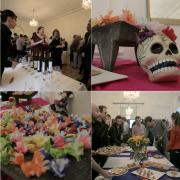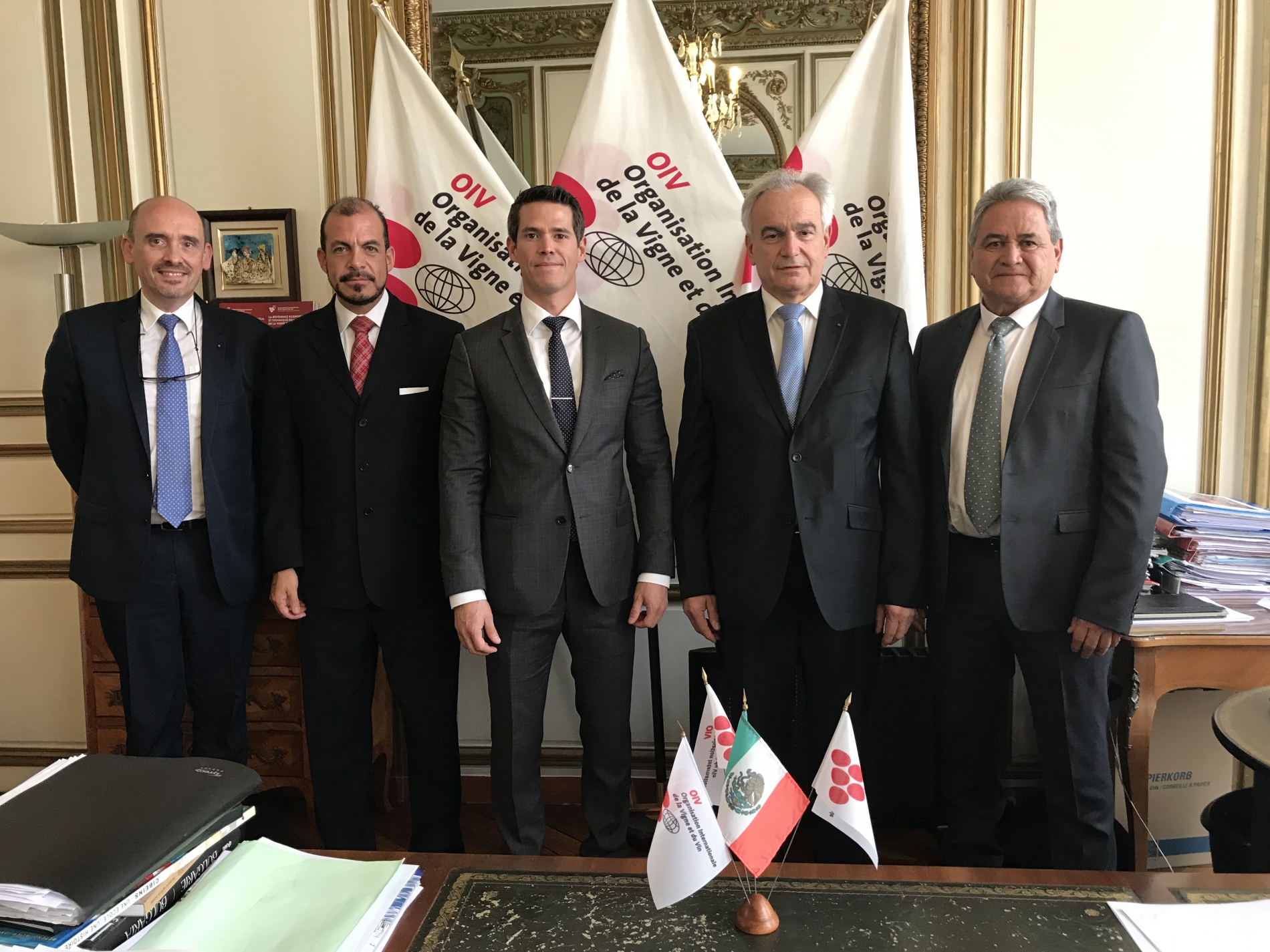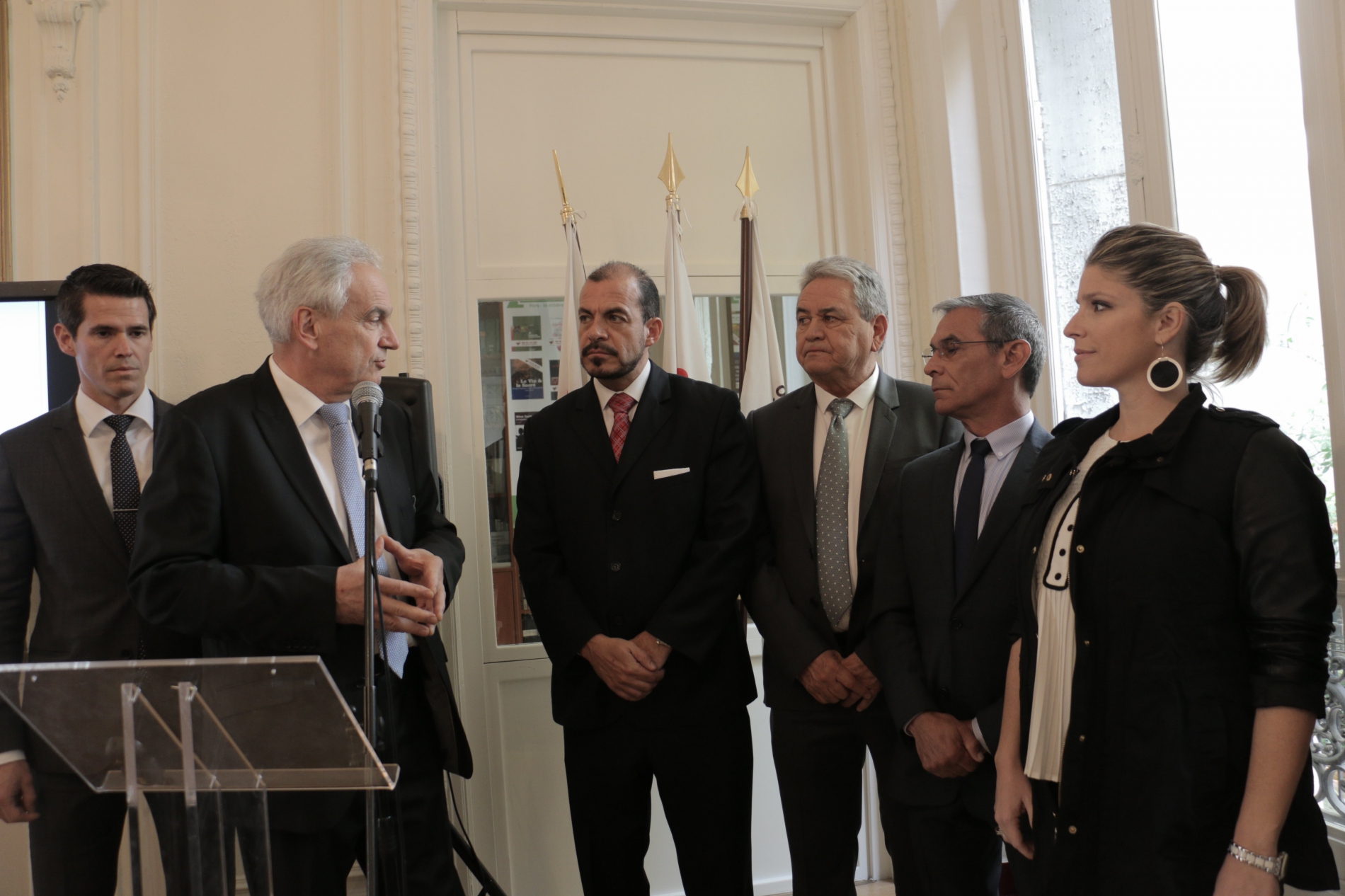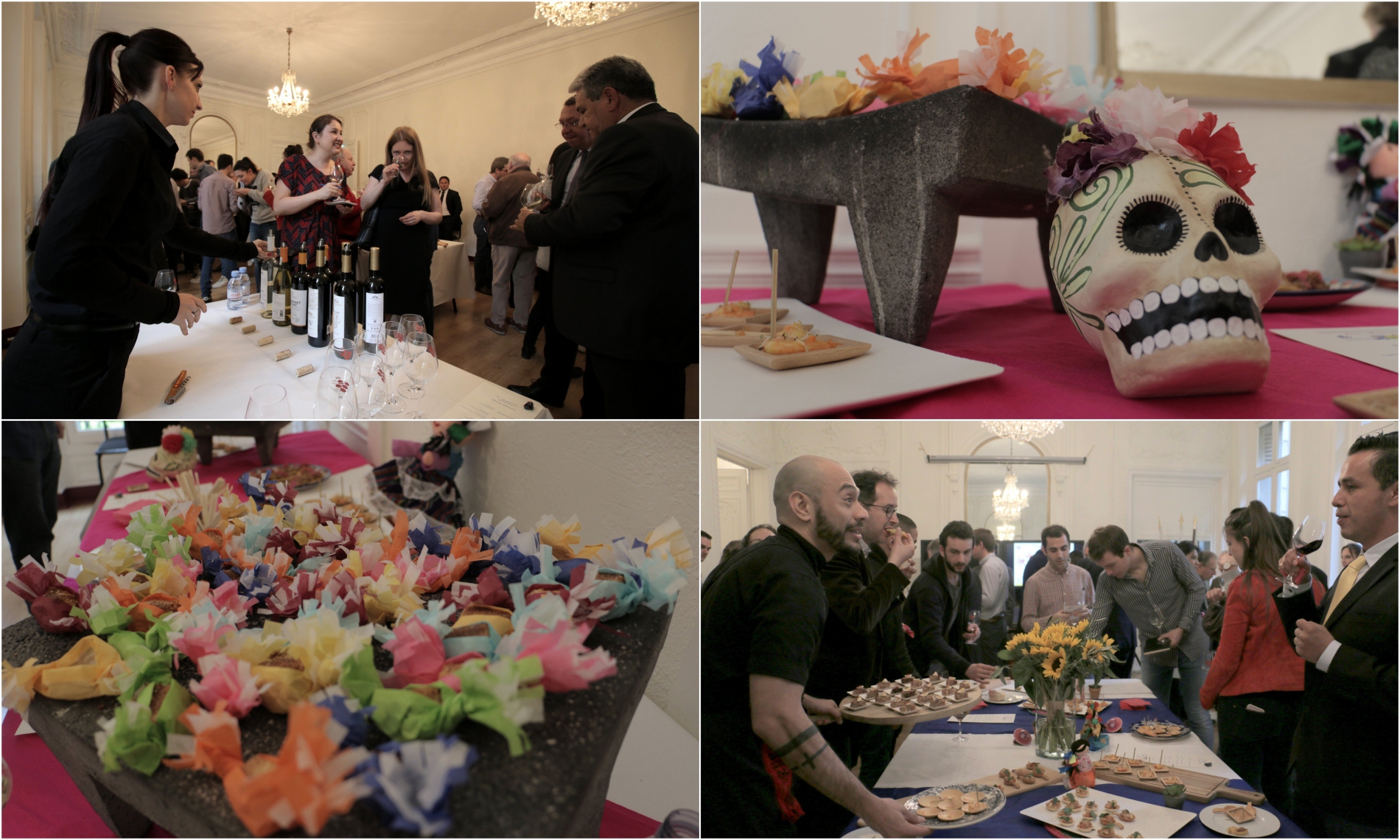
Mexico, which joined the OIV in 2016, embarked upon a bill in 2017 for the development of its national vitivinicultural industry, which is expected to be adopted several weeks from now. It was at the time of introduction of this bill and during the OIV Director General's visit to the Mexican Senate that the Undersecretary of Agriculture announced his intention for his country to organise a presentation of Mexican wine in Paris.
First Mexican wine tasting at the OIV headquarters
It was with great pleasure that Jean-Marie Aurand welcomed this first tasting of Mexican wines at the OIV headquarters, highlighting the strong and rapid growth of the sector and the synergy between the Mexican professional and public sectors. Mr Guillermo Garza García, Director of PROMÉXICO, representing H.E. Mr Juan Manuel Gómez Robledo, Mexican Ambassador to France, was proud to be able to present, with the Mexican Wine Council, a selection representative of the high quality of Mexican wines.

A production of 260,000 tonnes of table grapes per year
With a production of 260,000 tonnes of table grapes per year, an increase of 25% since the year 2000 with more than 60% exported, Mexico is becoming a significant player on the world market. Its production is well rewarded as it arrives on the market out of season (May to July). As for raisins, since 2000, production has increased by 225% to reach 14,000 tonnes in 2015. Driven by strong domestic demand (an annual increase in consumption of 12% for the last 10 years), wine production has experienced remarkable growth. A large number of wine companies established in 11 Mexican states produce nearly 200,000 hectolitres of a wide variety of high-quality wine every year.
Three Mexican regions represented
Mr Gabriel Padilla, Director of the Mexican Wine Council, presented historical, geographical and economic data on the sector, and this data was illustrated by oenologists from wineries in the regions of Lower California (Monte Xanic), Coahuila (Casa Madero) and Aguascalientes (Vinícola Santa Elena). The wines were presented to 100 or so professionals, amongst different wine-tapas pairings illustrating the perfect marriage between wines of character and recognised gastronomy.

